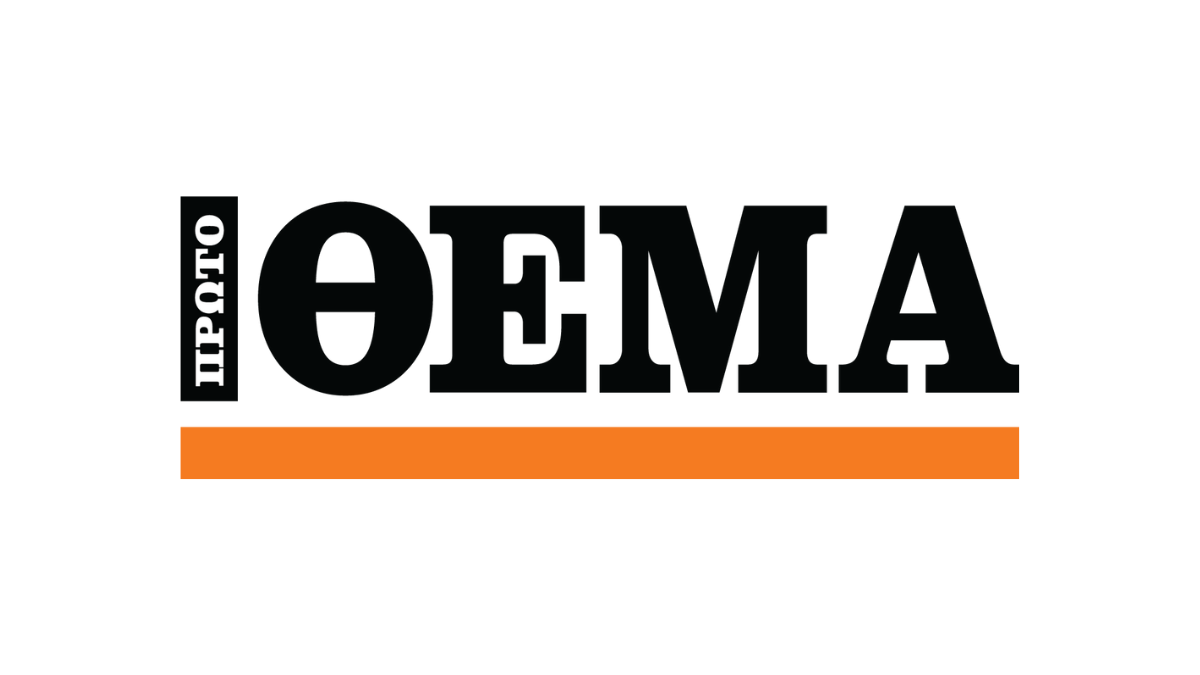The history of vending machines and the case of Greece – From milk and oil to champagne an
Source: ProtoThema English
The recent uproar that broke out and dominated the news for many days regarding the cost of transactions at bank ATMs – which fortunately ended with favorable solutions for consumers introduced by the government – reminded almost everyone of their usefulness.
When someone needs cash from their bank account, for any reason, they should be able to get it immediately, wherever they are, at any time of day. The cost, of course, of purchasing, operating, and maintaining these machines, which have been part of our daily lives for decades, has forced banks to shrink their networks.
However, beyond bank ATMs (Automated Teller Machines), product vending machines in general have also been part of our lives for decades, forming – relatively quietly – an entire market, the size of which is difficult to estimate precisely in our country. Still, it lags significantly behind European standards, and even more so behind American ones. In the “wonderful world” of product ATMs, Greece is running in second gear.
The Greek landscape
Nevertheless, thousands of vending machines – mainly for soft drinks, coffee and other beverages, cigarettes, snacks, and packaged food – are installed in thousands of locations, offering consumers 24/7 access to products. Starting in the 1980s with the primitive vending machines of such products, which were installed in places with large crowds, such as the famous army canteens (KΨM), where they often provided an alternative to the unit’s mediocre food, and extending to hospitals, universities, schools and tutoring centers, train stations, intercity bus terminals, airports and ports, stadiums, and later business offices and shopping centers.
More generally, they could be found in secure and protected locations, as well as nightclubs, bars, and clubs (which mostly had ATMs selling cigarettes and condoms), or integrated in various shops – safely enclosed but freely accessible – when those shops were closed.

Condom ATMs remain popular abroad.
From milk to cannabis
In the 2010s, there was a boom in the market for milk and other dairy products (cheese, yogurt, etc.), primarily with THESgala, which developed a remarkable nationwide network. Other cooperative producer groups followed, but the venture led to complete failure a few years later.
Today, vending machines are gradually expanding to other products, with some butcher shops even offering fresh meat, while in various locations, ATMs selling medical cannabis have sprung up over the past seven years – something that has also provoked reactions.

Specialized companies provide shopkeepers and merchants with vending machines of all kinds, offering various products beyond those already mentioned – including pharmacy and parapharmaceutical goods, draft beer, freshly squeezed juice, and personal protective equipment – at a wide price range, from several thousand euros up to five-digit amounts in the more complex cases.
Four years ago, the first micro markets also timidly made their appearance, relying almost exclusively on vending machines for their sales, but with not-so-positive results. A striking recent development, however, concerns the operation of standardized olive oil ATMs in four regions of the country by a company from Achaia.
All this is happening in Greece, while around the world the vending machine market has already moved into the era of offering even luxury goods – including gold bars and extremely expensive cars, among them Ferrari, Lamborghini, and Bentley!
Duck pâté in France
Because of lifestyle and culture, product vending machines entered consumers’ lives in the United States and Europe earlier, more intensely, and of course more widely – both geographically and in terms of the range of goods offered. In Greece, as with almost everything, product ATMs arrived with a delay and a narrower scope of products, which gradually expanded but never managed to synchronize with the rest of the world.
In the 2010s, this market experienced a boom in Europe, especially regarding the expansion of machines offering food and, contrary to older beliefs, even fresh products. With France as the focal point and, secondarily, Britain and Germany, the “wonderful world” of ATMs expanded to offering fresh meat, vegetables, bread, and other foods. Parisians, Londoners, and Berliners began buying them 24/7 from vending machines.
The premiere was made by the shop “L’Ami Txulette”, on Charonne Street in East Paris, which in 2016 installed a vending machine-fridge offering vacuum-packed meats (sausages, steaks, fillets, ham, duck pâté, beef carpaccio, etc.), with an extra charge – at the time – of €0.20.
Meat ATMs then spread throughout France, particularly in small villages without butcher shops or supermarkets, as well as in mountain tourist areas, where ATMs even offer local specialties such as andouillette, a type of sausage made from pork intestines stuffed with meat and local herbs.
French fries in Belgium
In Brussels, vending machines for French fries have existed for a decade. The first such ATM, under the name “Corner Chips”, was placed outside a supermarket in Molenbeek in 2014. In Germany, 30% of fresh sandwiches and 10% of fresh salads are sold through vending machines.
Lamb and celery in the USA
Of course, the above had already happened in the US more than a decade earlier. In September 2009, Fresh Del Monte Produce invested in developing its network of vending machines selling fresh and pre-cut fruits and vegetables, starting in Illinois and Chicago and expanding to Florida and the southeastern states. Today, its ATMs sell bananas, pineapples, grapes, apples, carrots, celery, and tomatoes.
In addition, Applestone Meat, part of Applestone Solutions, installed meat vending machines in various locations in New York State, offering a variety of meats such as beef, pork, and lamb sourced from local farms. According to Bloomberg, an Applestone steak vending machine costs up to $30,000.
The well-known company Dole introduced banana vending machines to the Japanese market in 2010. In the same country, consumers can even buy eggs from food ATMs. Since 2014, products such as pears, avocados, kiwis, strawberries, and local nut varieties have been sold extensively via ATMs in Australia.
Olive oil ATMs in Greece
At present, vending machines for selling oil are available in the Greek market. The owner-operator of such a machine can install it in their space and sell packaged olive oil, provided they have the necessary permits. However, an Achaian company took things a significant step further. Achaean Land has, for the past seven months, enabled consumers to purchase its olive oil from vending machines it has already installed in four locations in the country: Athens, Edessa, Ptolemaida, and Amyntaio.
The idea is not new. The company had been preparing this innovation for seven years. It even presented the first vending machine at the FOODEXPO 2022 exhibition. It maintains olive groves with about 10,000 trees in Achaia, with a total annual production of 50–60 tons of oil.
Its machines dispense olive oil in tin containers of 250 ml, 500 ml, and 750 ml. According to the company, consumer acceptance has been satisfactory. By the end of 2027, it plans to install a total of 150 machines in major urban centers of the country. In the first phase, within the year – early 2026 – another 15 vending machines will be added in Athens, followed by installations in Patras, Ioannina, Agrinio, Crete, Thessaloniki, and many other urban centers.
The failure of THESgala
One of the most striking ventures in the development of food vending machines came in 2013, when the Thessalian THESgala launched, in the midst of the crisis, the “offensive” of livestock farmers, who overnight turned from producers into retailers. THESgala initially installed vending machines in Larissa and managed to provide consumers daily with fresh milk produced on its members’ farms in less than 24 hours from production.
It quickly reached 70 locations across Greece, while gradually adding cheese and strained yogurt to its product range.

Consumer response to the venture was more than enthusiastic. Just two months after the installation of the fresh milk and dairy vending machines in Athens, total consumption in the capital exceeded 700 tons, with daily consumption in the capital alone surpassing 20,000 bottles of fresh THESgala milk. Who does not remember the queues at THESgala ATMs in various parts of Athens, even at midnight hours?
Seeing the success of THESgala, four other cooperatives and producer groups from different parts of the country entered the same market. The Dairy Farmers of Eastern Peloponnese installed a vending machine in Athens for their milk; the goat and sheep breeders of the Evros-based cooperative Thraki Amnos, who through vending machines in Xanthi and Alexandroupolis offered fresh pasteurized goat’s milk and ice cream; as well as the Producers’ Group of Kozani.
However, the continuation was not similar. The THESgala project collapsed amid declining consumption due to the crisis, the high cost of installing new points (€100,000–150,000), and the competition from dairy industries producing and marketing fresh milk – which, for a period, were simultaneously customers and competitors of the Thessalian company. In 2020 it was forced to shut down its ATMs in Thessaloniki, and in 2021 those in Athens. A few months later, the last remaining ones in Larissa also closed.
The “market pie”
It is generally acknowledged that in Greece the sales model via vending machines lags far behind the average European growth rate for this market, which itself trails the American one.
According to 2021 data, the total global market for retail vending machines was just under $52 billion, with an expected annual growth rate of 10.7% until 2030, when it is expected to exceed $130 billion. Driving the sector is North America (USA–Canada), with a 30.7% share of total sales.
An earlier survey by the European Vending & Coffee Service Association, carried out in France, Germany, Italy, and Spain on coffee and ready meals, showed that the majority of workers prefer to use local supermarkets to buy food, such as sandwiches, for the workplace.
Greece’s lag is attributed mainly to the fact that our country has a massive network of retail points (supermarkets, mini-markets, convenience stores, and kiosks) per 1,000 inhabitants, with many operating on extended hours, even 24/7, and located almost everywhere. According to Nielsen IQ, in 2021 (latest available data), there were a total of 32,311 such points operating in Greece – 13,000 fewer than in 2010, though this drop is due to the sharp decline in the number of kiosks.

At the same time, in the USA, with its 300 million-plus consumers, product ATMs compete with approximately 65,000 supermarkets and grocery stores. In the European Union, it is estimated that today there are about 4.5 million vending machines in operation, with 55% of European consumers using a vending machine at least once a week, spending on average €4.5.
Caviar, diamonds, cars
It may seem unbelievable to many, but over time vending machines have evolved in major international markets – primarily the American one – to respond to almost all the ever-increasing and qualitatively changing consumer demands, even the most sophisticated ones. They have now reached the point of offering luxury goods, from designer handbags and diamond bracelets to high-quality caviar, champagne, gold bars, and extremely expensive cars.
Recently, the specialized investment and market news website Therichest.com presented a range of ATMs aimed at a select few buyers, while the vending machines themselves cost a fortune.
For example, shoe vending machines in clubs, costing $15,000. These are ATMs installed in clubs that sell – for cash or card – women’s ballet flats, which women can wear when high heels become uncomfortable. Such machines are already plentiful in selected nightclubs and bars, mainly in Las Vegas and New York.
In states where the use of marijuana is permitted, vending machines for it also “flourish.” The cost of each machine starts at $16,000. They are already hugely popular and are usually found in clinics – and elsewhere – allowing customers to buy various cannabis products, such as flowers, buds, and essential oil of the plant. One such machine, ZaZZZ, is very popular in the US, especially in selected pharmacies in California, Colorado, and Arizona. It uses biometric technology to verify age and identity, ensuring transaction security.
Also popular are the Moët & Chandon champagne vending machines, the cost of which rises – or, more precisely, starts – at $35,000. These can be found in various luxury hotels, mainly in New York.

For the even more selective, there are caviar vending machines, the Caviar Vending Machines. These machines offer high-quality caviar and are already installed in selected locations in the US, mainly shopping malls in Los Angeles. Their value exceeds $85,000.
Almost double is the cost of a Sephora vending machine, amounting to $157,000. The machine is already installed in many American airports, such as New York, Las Vegas, Dallas, and Houston, as well as in several other locations, according to Luxury Launches. It offers a variety of beauty products, not only from the Sephora line but also from many other brands of makeup, skincare, and fragrances.
The next one may sound unbelievable, but it is absolutely real. The Gold To Go vending machines offer their customers – a very specialized clientele, of course – gold bars of various sizes and even shapes, starting from 1-gram bars up to 1-ounce bars. The machine updates and informs prospective customers of gold prices every 10 minutes, ensuring that they know the most up-to-date rates, which fluctuate accordingly. According to The Guardian, gold ATMs are located in selected luxury hotels in the US, the United Arab Emirates, Germany, and Spain. The cost of each machine is about $180,000.
Even more expensive is the one and only car vending machine. It costs $2 million. It is the Supercar vending machine of Autobahn Motors, located in Singapore in a 15-story building with a capacity of 60 cars. It allows customers to instantly purchase luxury cars such as Ferrari, Lamborghini, and Bentley. They select the vehicle they are interested in using a touch screen. Then, after paying for it with a card, the chosen car is lifted onto a platform and transported from the floor where it is located down to the ground floor to be delivered to the customer. No one intervenes. Only the building’s security is present. What could be simpler?
Ask me anything
Explore related questions
The original article: belongs to ProtoThema English .





